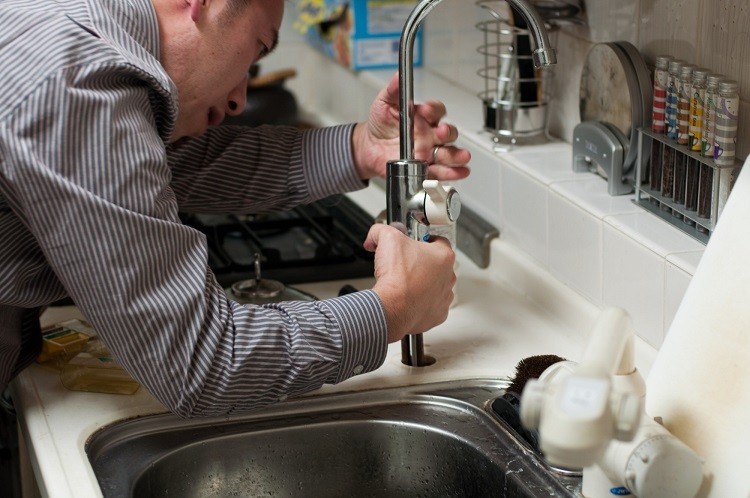A tiny drip under your sink that turns into a flooded kitchen overnight. That nightmare happens more often than you think. Basic plumbing maintenance stops those issues before they start. As a professional Anaheim CA plumber, you know the right tools make all the difference. They turn you from a fixer-upper into a true pro who saves clients time and money. In this guide, we’ll cover the must-have gear for everyday jobs. From spotting hidden problems to sealing leaks tight, these items form your core setup. Stick with quality pieces, and you’ll build a solid reputation.
Core Diagnostic and Inspection Equipment
You can’t fix what you don’t see. That’s why pros start with tools that spot issues fast. These items let you check pipes without tearing walls apart. They save hours and keep jobs clean.
Drain Snakes and Augers (Handheld and Motorized)
Drain snakes clear clogs without harsh chemicals. Handheld ones work great for small sinks or tubs. They twist through hair or soap buildup with ease.
Pick a closet auger for toilets—it’s short and bends just right. For tougher spots, grab a motorized version. It powers through grease or roots in main lines.
Keep sizes handy: 1/4-inch for sinks, 1/2-inch for bigger drains. Pros swear by these for quick wins. One study shows they cut repair time by half compared to plungers alone.
- Handheld auger tips: Use clockwise turns to avoid snags.
- Motorized perks: Lights and cables reach 100 feet deep.
- Maintenance hack: Clean after each use to last years.
Inspection Cameras (Sewer Cameras)
Peek inside pipes like a spy cam in a movie. Sewer cameras show cracks or blockages without digging. You save clients from big excavation bills.
Look for self-leveling heads—they keep the view straight. Recording footage helps explain problems to homeowners. It’s a smart way to build trust.
These tools pay off quick. One pro outfit reports they boost job efficiency by 40%. Pair with a waterproof case for rough sites.
Key features to check:
- LED lights for dark pipes.
- Flexible cables up to 200 feet.
- Software for still shots and videos.
Pressure Testing Kits and Water Meters
Test water flow to catch leaks early. Pressure kits hook to lines and gauge psi levels. Normal home pressure sits around 50-80 psi—anything off means trouble.
Water meters track usage and spot hidden drips. Isolate a faucet, then watch for movement. It’s like a detective tool for slow leaks in walls.
Use these on new installs too. They confirm everything seals right. Data from plumbing groups says undetected leaks waste 10,000 gallons a year per home.
- Kit basics: Include gauges, hoses, and adapters.
- Meter types: Inline for mains, clamp-on for quick reads.
- Pro tip: Calibrate yearly for accurate results.
Essential Hand Tools for Everyday Repairs
Hand tools handle the grunt work. You need sturdy ones that fit your grip. Cheap versions slip and break—don’t skimp here.
These basics go in every truck. They tackle nuts, pipes, and fittings daily. With practice, they speed up jobs like nothing else.
High-Quality Pipe Wrenches and Adjustable Wrenches
Pipe wrenches grip round fittings tight. Go for 14-inch or 18-inch sizes for most homes. They turn valves without marring metal.
Adjustable wrenches flex for odd jobs. Set the jaw once, and it holds. Chain styles wrap around large pipes for extra bite.
Match tool size to the job. A mismatch strips threads fast. Pros pick cast-iron heads for daily abuse.
Benefits include:
- Better leverage on stubborn bolts.
- Jaw guards to protect chrome finishes.
- Ergonomic handles to cut hand strain.
Plumber’s Pliers (Tongue-and-Groove and Channel Locks)
These pliers grab flat or round spots. Tongue-and-groove versions adjust for width. They’re perfect under tight sinks.
Channel locks shine on hex nuts. Keep a set from 6 to 16 inches. Smaller ones fit behind toilets; big ones handle main shutoffs.
Versatility rules here. One tool swaps between gripping and bending. Users report they handle 80% of repair tasks solo.
- Grip perks: Serrated jaws lock without slip.
- Size advice: Carry multiples for access.
- Care note: Oil joints to stay smooth.
Tubing Cutters and Deburring Tools
Cut pipes clean for solid joins. Tubing cutters wheel around copper or plastic. They leave square ends every time.
Deburring tools smooth rough edges. Skip this, and fittings leak. It’s a quick step that prevents big headaches.
Work with PEX or CPVC the same way. A good cutter slices in seconds. Plumbers say precise cuts reduce failures by 30%.
Steps for best results:
- Mark your cut line.
- Tighten the wheel in passes.
- Deburr inside and out.
Soldering, Brazing, and Joining Equipment
Permanent fixes need heat and skill. These tools create bonds that last decades. Safety comes first—always gear up right.
Focus on supply lines where water pressure tests seals. Master these, and callbacks drop.
Propane and MAPP Gas Torches and Safety Gear
Torches heat fittings to melt solder. Propane works for small jobs like faucets. MAPP gas burns hotter for thick copper.
Use a trigger-start model for control. Safety gear includes gloves and goggles. Fire blankets shield nearby wood.
Never skip heat putty—it blocks flames from cabinets. One incident report notes 20% of fires tie to poor prep. Stay safe, stay in business.
Essential items:
- Self-igniting torches.
- Extinguishers nearby.
- Ventilation fans for fumes.
Soldering and Brazing Supplies (Flux, Solder, and Wire Brushes)
Flux cleans and protects metal. Brush pipes first, then apply. It stops oxidation during heat.
Solder must be lead-free—95/5 tin-antimony mix flows best. Wire brushes scrub fittings shiny. Dull surfaces mean weak joints.
For brazing, use silver solder on high-pressure lines. Proper prep doubles joint life. Follow codes to pass inspections.
Supplies checklist:
- Acid-core flux for water pipes.
- 1/8-inch solder rolls.
- Stainless brushes for no rust.
PEX Crimp and Expansion Tools
PEX pipes flex without solder. Crimp tools squeeze rings tight. Expansion ones stretch the pipe first.
Match tools to system type. Cinch clamps need a ratchet style. Expansion requires a ring and tool kit.
These speed installs in tight spots. No open flame means safer work. Modern homes use PEX in 60% of new builds.
- Crimp steps: Slide ring, crimp, check with gauge.
- Expansion edge: Larger diameters fit easier.
- Tool pick: Battery-powered for all-day use.
Leak Detection and Sealing Supplies
Leaks hide until they flood. Spot and stop them fast with these. Quick action keeps water bills low.
From threads to cracks, these fix minor woes. Stock up for on-site needs.
High-Performance Sealants and Thread Tapes
Thread tape wraps male fittings. PTFE type seals NPT threads best. Wind it clockwise, three layers thick.
Pipe dope fills gaps on plastic. Use it for drains where tape slips. Hybrid versions work on both.
Test after apply—tight but not overdone. Sealants cure in hours. They cut leak calls by 25%, per trade stats.
Types to have:
- Yellow gas-rated tape.
- Silicone for wet areas.
- Anaerobic for high pressure.
Water Leak Detection Dyes
Dyes color water to trace paths. Drop blue tablets in tanks. Watch for stains in walls or floors.
Non-toxic formulas work on toilets or roofs. They glow under blacklight for hidden spots. One vial traces a whole system.
Pros use them for insurance claims too. Visual proof speeds payouts. Keep packets dry for long shelf life.
Application guide:
- Flush dye through lines.
- Inspect low spots first.
- Document with photos.
Compression Fittings and Repair Clamps
Compression nuts tighten on olives. They fix pinholes in seconds. Slide on, wrench snug.
Repair clamps band around splits. Rubber seals the gap. Use for emergencies only—replace sections soon.
These buy time on jobs. Follow with full pipe swap. Clamps hold 100 psi short-term.
- Fitting sizes: 1/2-inch for most homes.
- Clamp lengths: 4 to 12 inches.
- Install tip: Even pressure all around.
Conclusion: Equipping for Excellence in Plumbing Service
The best plumbers pack smart. From snakes that clear clogs to torches that seal tight, these tools handle basic maintenance like pros. Invest in quality to cut time on jobs and boost client trust.
You save money long-term too. No more rushed fixes or repeat visits. Build your kit step by step—start with diagnostics, add hands-on gear.
Ready to level up? Check your toolbox today. Grab what’s missing and tackle that next call with confidence. Your reputation—and dry floors—will thank you.










